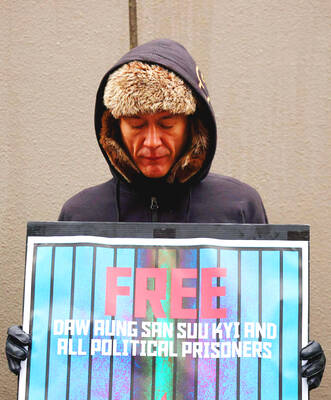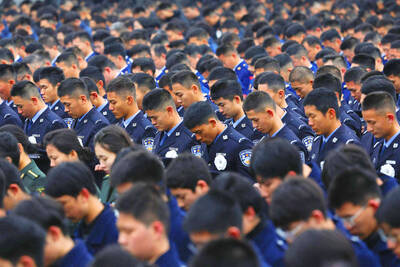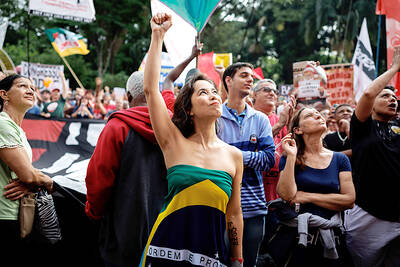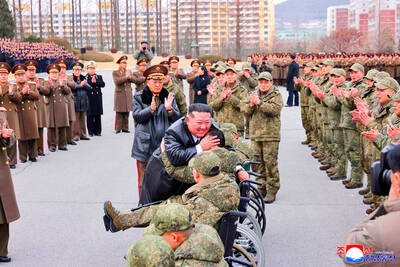Japan harbors deep pockets of racial discrimination and its leaders show little will to fight the problem, an independent investigator for the UN said yesterday after a nine-day tour of the country.
Doudou Diene said he was encouraged by the support that the government gave him during his stay, but said he found officials often failed to understand or recognize the seriousness of racism and discrimination, especially against the ancestors of Japan's former outcast and ethnic Koreans.
"The lack of a strong political will to fight discrimination is a serious problem," Diene, an independent investigator for the UN Human Rights Commission, told a news conference after touring several Japanese cities to meet with officials and minority groups, and visit slums.
Though Japan is a largely homogenous society, there are several significant minority groups that Diene said continue to suffer from social and economic discrimination. He noted the ethnic Koreans and Chinese, along with the former outcastes, or Burakumin, and the indigenous Ainu group.
Diene, who has made similar visits to about a dozen nations as an independent investigator for the UN Human Rights Commission, said he will submit his final report to the UN General Assembly in March.
He said that although the government "fully cooperated" with his visit, he felt a contradiction between the level of the problem as seen through official eyes and how the minorities perceived it.
He said he was also concerned by the use of racist or nationalist themes by politicians seeking to whip up popular emotions. Diene said he had been refused a meeting with Tokyo Governor Shintaro Ishihara, an outspoken nationalist.
He said he was discouraged by the general exclusion of the nation-building contributions of minorities in textbooks.
"The place accorded to the national minorities," he said, "is highly important."

The Burmese junta has said that detained former leader Aung San Suu Kyi is “in good health,” a day after her son said he has received little information about the 80-year-old’s condition and fears she could die without him knowing. In an interview in Tokyo earlier this week, Kim Aris said he had not heard from his mother in years and believes she is being held incommunicado in the capital, Naypyidaw. Aung San Suu Kyi, a Nobel Peace Prize laureate, was detained after a 2021 military coup that ousted her elected civilian government and sparked a civil war. She is serving a

China yesterday held a low-key memorial ceremony for the 1937 Nanjing Massacre, with Chinese President Xi Jinping (習近平) not attending, despite a diplomatic crisis between Beijing and Tokyo over Taiwan. Beijing has raged at Tokyo since Japanese Prime Minister Sanae Takaichi last month said that a hypothetical Chinese attack on Taiwan could trigger a military response from Japan. China and Japan have long sparred over their painful history. China consistently reminds its people of the 1937 Nanjing Massacre, in which it says Japanese troops killed 300,000 people in what was then its capital. A post-World War II Allied tribunal put the death toll

‘NO AMNESTY’: Tens of thousands of people joined the rally against a bill that would slash the former president’s prison term; President Lula has said he would veto the bill Tens of thousands of Brazilians on Sunday demonstrated against a bill that advanced in Congress this week that would reduce the time former president Jair Bolsonaro spends behind bars following his sentence of more than 27 years for attempting a coup. Protests took place in the capital, Brasilia, and in other major cities across the nation, including Sao Paulo, Florianopolis, Salvador and Recife. On Copacabana’s boardwalk in Rio de Janeiro, crowds composed of left-wing voters chanted “No amnesty” and “Out with Hugo Motta,” a reference to the speaker of the lower house, which approved the bill on Wednesday last week. It is

FALLEN: The nine soldiers who were killed while carrying out combat and engineering tasks in Russia were given the title of Hero of the Democratic People’s Republic of Korea North Korean leader Kim Jong-un attended a welcoming ceremony for an army engineering unit that had returned home after carrying out duties in Russia, North Korean state media KCNA reported on Saturday. In a speech carried by KCNA, Kim praised officers and soldiers of the 528th Regiment of Engineers of the Korean People’s Army (KPA) for “heroic” conduct and “mass heroism” in fulfilling orders issued by the ruling Workers’ Party of Korea during a 120-day overseas deployment. Video footage released by North Korea showed uniformed soldiers disembarking from an aircraft, Kim hugging a soldier seated in a wheelchair, and soldiers and officials